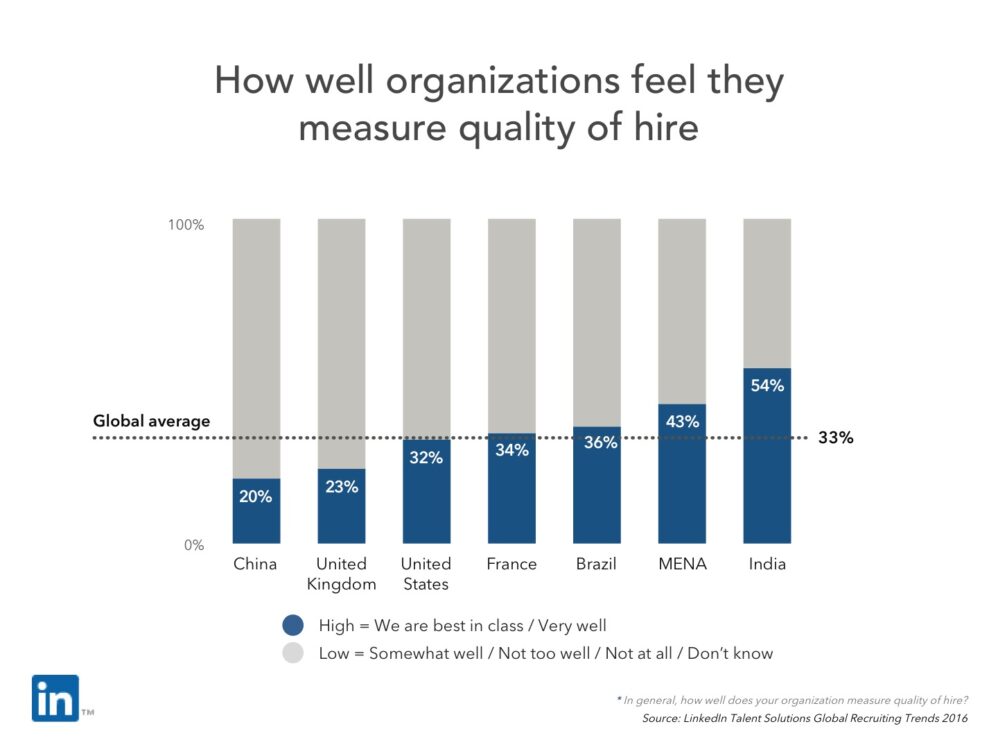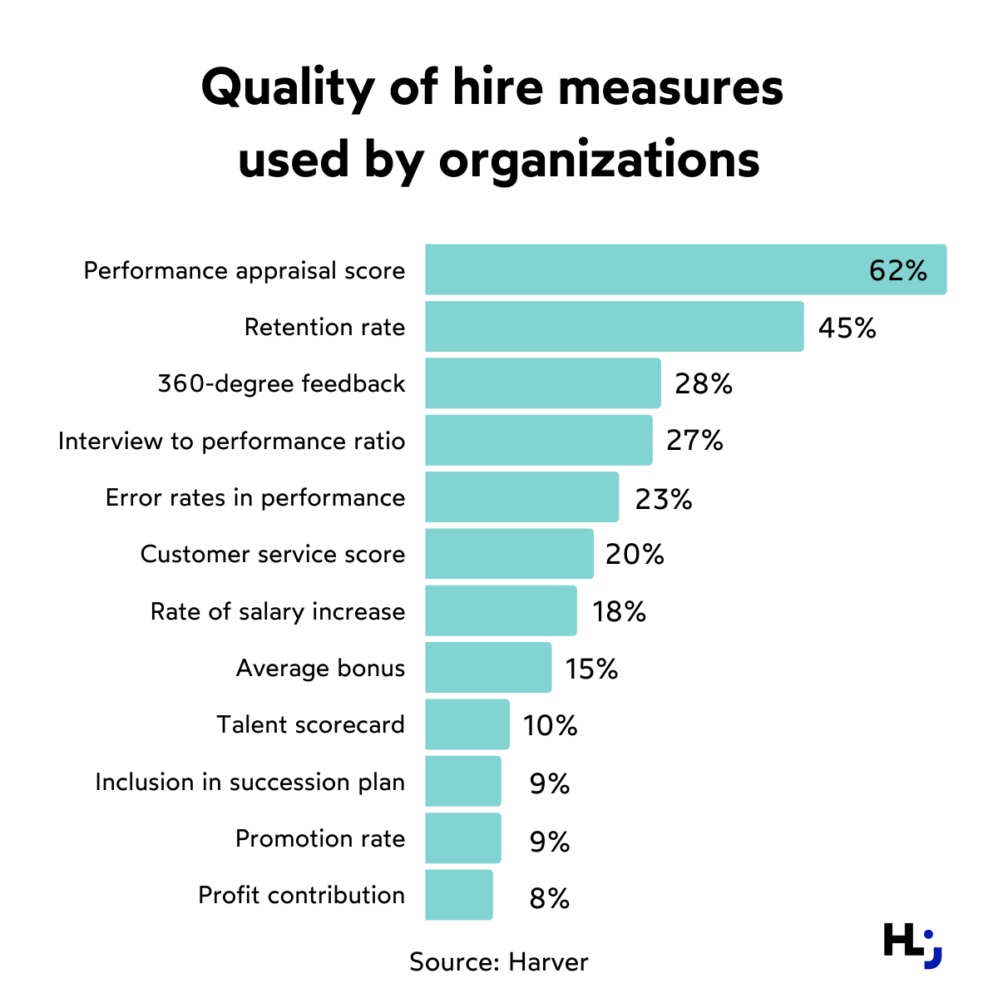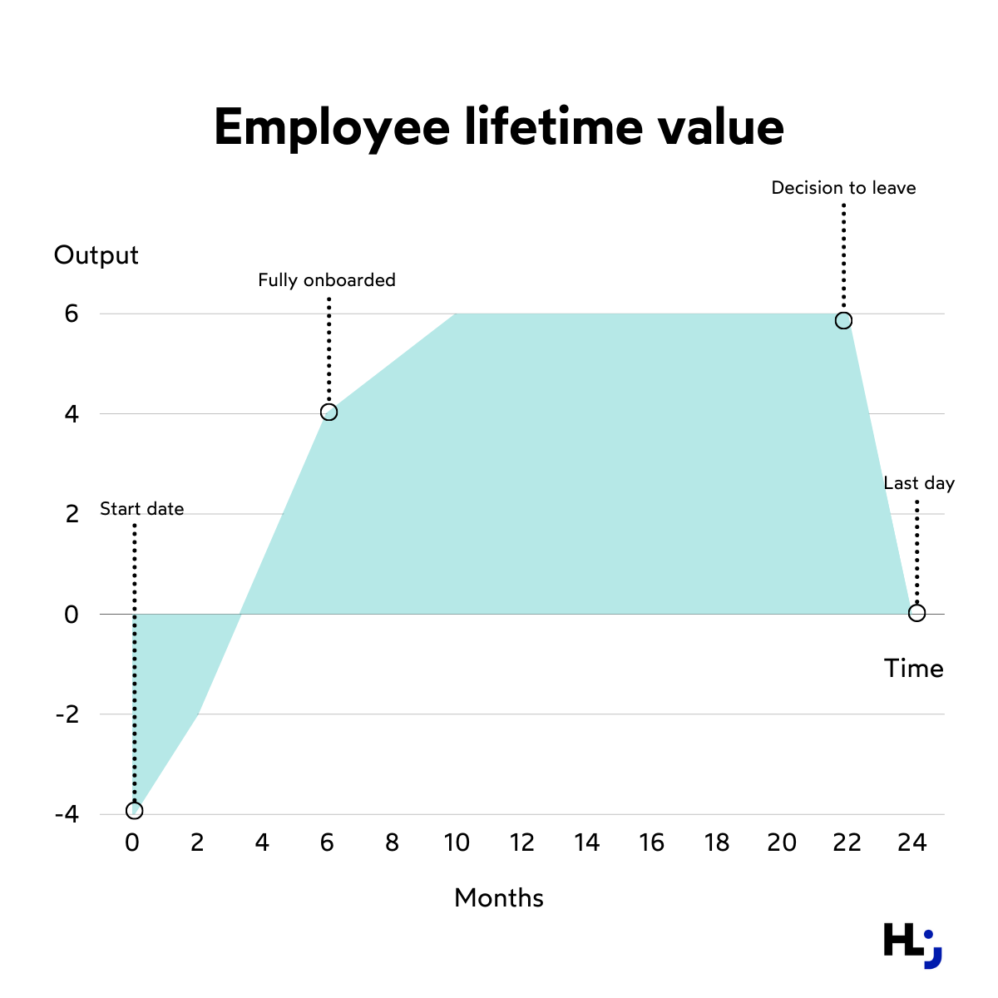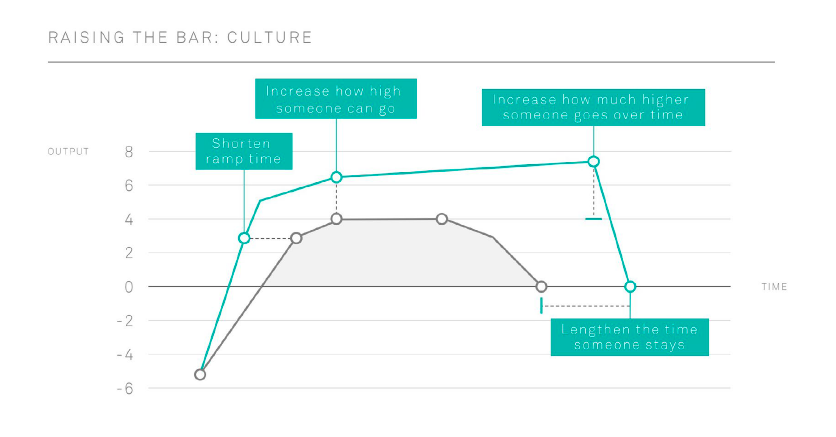Why measuring the quality of hire should be your next KPI

Quality of hire is often called “the golden HR rate” and stays on top of the list of every HR KPIs. Here’s why.
The most important and obvious goal of the hiring process is successful recruitment. Even if an applicant meets all the requirements and has all the necessary skills, there is no guarantee that he or she will prove to be a dedicated, high-performing employee. For this reason, quality of hire is the most important KPI for many HR managers.
Research shows that quality of hire is a priority for 40% of large companies globally and 45% of small businesses. According to the LinkedIn Global Talent Report, 39% of executives agree that quality of hire is the most important KPI for evaluating performance and put it at the top of their priorities.
Despite these numbers, only 33% of companies feel they have effective tactics in place to measure hiring quality, and only 5% believe their tactics are best in class. How can you measure this effectively and why should you? Let us dive deeper into the topic.

Quality of hire – definition
Quality of Hire (QoH) provides information about the value that a new employee brings to a company. It not only measures how successful a new hire is, but also serves as a measure of the company’s overall recruiting performance. It shows how effective the company is in finding and retaining valuable talent.
Why is the quality of the hire important?
Measuring quality of hire is critical to building high-performing teams. When you hire qualified and engaged employees, you have a better chance of achieving your business goals, delivering the results customers want, and attracting more talent.
It also helps you improve and adjust your overall hiring strategy. You need to know what quality of candidates you are looking for.
Tracking other HR metrics and having a right data set can also help you and show, for example, that a particular hiring source is weaker and leading to lower quality hires. By tracking the quality of hires, you can readjust the entire hiring process: change the interview questions, change the tasks you assign to candidates, or improve the way you communicate with candidates.
Remember that measurement drives excellence – if you can’t measure something, you can’t improve it either.
How to measure the quality of hire?
Despite its importance, quality of hire is the most complex and difficult of all metrics. There are several ways to measure it, and companies use a variety of tactics.

Here are some of the most-often used indicators of the quality of hire:
Job performance review
This is the most popular method of measuring the quality of hires. This metric shows that newly hired employees are adding value, such as meeting sales goals, delivering the required amount of product units, or achieving desired customer satisfaction.
Employee retention and turnover
The longer an employee works for a company, the more value he or she brings to the organization. By tracking turnover rates of new hires as well as top performers in the company, you can calculate a value for quality of hire.
Time to onboard
This is the time it takes for a new employee to start making a meaningful contribution and being productive. You can improve this rate by implementing a successful onboarding process.
Productivity
This is measured as the percentage of new hires who reach full productivity within the desired time frame. You can measure an employee’s individual productivity by reviewing the percentage of goals achieved.
Hiring manager satisfaction
41% of companies use manager satisfaction as a data point in measuring the quality of hire. This metric shows how hiring managers evaluate new hires after a certain period of time.
Employee satisfaction
You can measure employee satisfaction with the job by launching regular surveys. It will not only help you measure the quality of hire but als gather valuable feedback.
Employee Lifetime Value (ELV)
This indicator represents the total net value an employee brings to your organization and is measured over their lifetime with the company.
At “start” an employee’s output is negative because they are yet contributing anything to the team, but have consumed the resources of the recruiting and hiring team.
They then increase their productivity until they reach the next milestone: “full Contribution”, where they are fully engaged in their role.
At some point, an employee’s growth stagnates and they begin to consider other employment opportunities. They make the “decision to leave.” After this point, their productivity generally begins to decline.
Eventually, an employee reaches their “last day” with the company. At this point, their performance goes down to zero.

There are ways to increase the ELV to some extent. They include:
- Shortening time to productivity with better role fit and effective onboarding.
- Increasing the productivity and performance over time.
- Giveing people new opportunities and ability to learn.
- Lengthening the time people stay with the company.

Pre-hire metrics
To have a full picture of the quality of hire, some organizations look also at pre-hire metrics. They can include quantitative insights, such as scores on assessments and aptitude tests, and qualitative metrics, for example that a candidate receivs counter offers. Optimizing basic hiring metrics like cost per hire and applicants per hire can also make the process more efficient.
Wrap-up
While not the easiest metric to track, quality of hire can be critical to business success. It proves that recruitment is a core competency of the business, producing the best selected talent, and measures the contribution of employees over time.
If you liked the article, you can follow us on Twitter for more insights and tips on how to make your HR management easier!
If you want to track your recruitment KPIs – including quality of hire – Human Panel can help you set the right metrics and collect the right data points. We will take care of all the data integration and provide you with a custom people analytics dashboard so you can set, measure, and achieve your HR goals.



